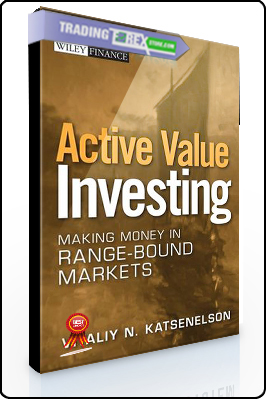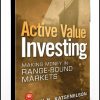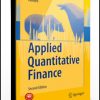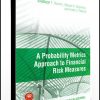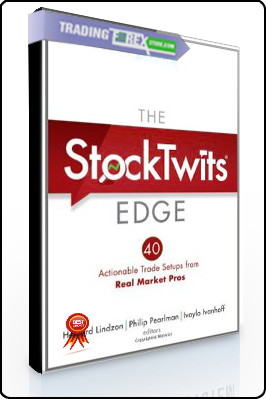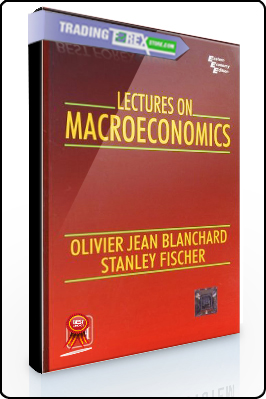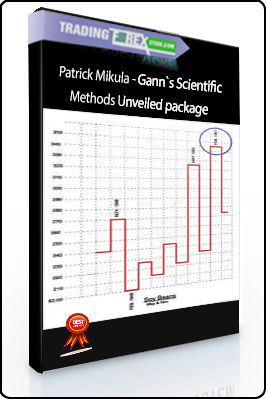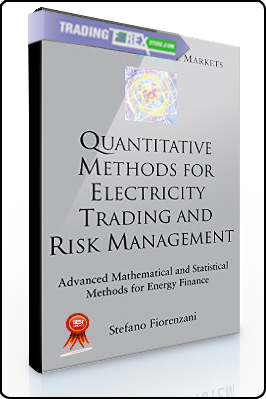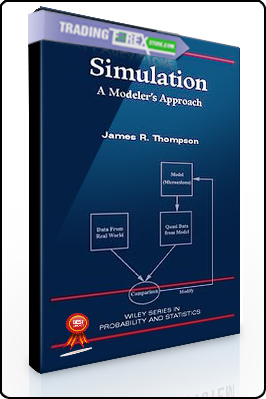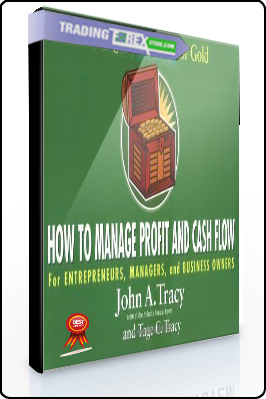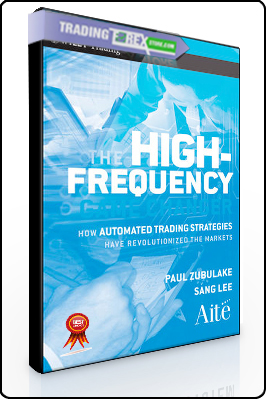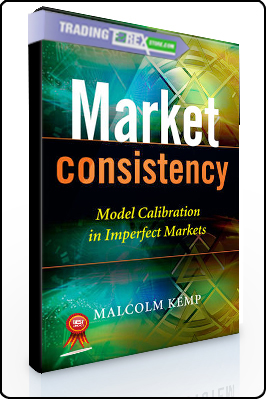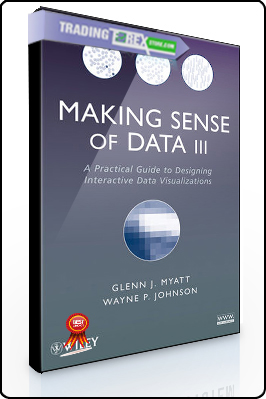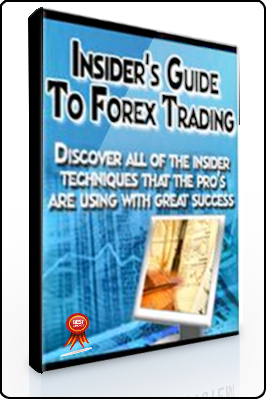Vitaliy Katsenelson – Active Value Investing. Making Money in Range Bound Markets
$9.00
Vitaliy Katsenelson – Active Value Investing. Making Money in Range Bound Markets
Size: 2.6 MB
You Just Pay: $9
- Description
Description
A strategy to profit when markets are range bound–which is half of the time
One of the most significant challenges facing today’s active investor is how to make money during the times when markets are going nowhere. Bookshelves are groaning under the weight of titles written on investment strategy in bull markets, but there is little guidance on how to invest in range bound markets. In this book, author and respected investment portfolio manager Vitaliy Katsenelson makes a convincing case for range-bound market conditions and offers readers a practical strategy for proactive investing that improves profits. This guide provides investors with the know-how to modify the traditional, fundamentally driven strategies that they have become so accustomed to using in bull markets, so that they can work in range bound markets. It offers new approaches to margin of safety and presents terrific insights into buy and sell disciplines, international investing, “Quality, Valuation, and Growth” framework, and much more.
Vitaliy Katsenelson, CFA (Denver, CO) has been involved with the investment industry since 1994. He is a portfolio manager with Investment Management Associates where he co-manages institutional and personal assets utilizing fundamental analysis. Katsenelson is a member of the CFA Institute, has served on the board of CFA Society of Colorado, and is also on the board of Retirement Investment Institute. Vitaliy is an adjunct faculty member at the University of Colorado at Denver – Graduate School of Business. He is also a regular contributor to the Financial Times, The Motley Fool, and Minyanville.com.
Table of Contents
Preface xiii
PART ONE What the Future Holds
CHAPTER 1 Introduction: Range-Bound Markets Happen 3
Fasten Your Seat Belts and Lower Your Expectations 3
Let’s Identify the Animal 4
Secular versus Cyclical 4
Distinction between Secular Bull, Bear, and Range-Bound Markets 6
Is 100 Years Long Enough? 7
Stocks Carried the Torch in the Long-Run Marathon 8
International Stocks Were Bright Lights, Too 10
Will Gold Shine Again? 11
Gold’s Recently Emerged Competition 13
The Deception of the Long Run (Marathon) 14
Range-Bound Markets Erode Bull Market Returns 15
The Long Run for Us May Be Shorter Than
We Think 17
CHAPTER 2 Emotions of Secular Bull, Bear, and Range-Bound Markets 23
Bull Market Euphoria 23
Bear Market Doldrums 25
What Does a Secular Range-Bound Market Feel Like? 29
Volatility of Bull and Range-Bound Markets 31
CHAPTER 3 Stock Market Math 37
Sources of Capital Appreciation: Earnings Growth 38
Sources of Capital Appreciation: Price to Earnings 48
Sources of Dividend Yield 57
Why Range-Bound Markets Follow Bull Markets 61
It Is Not Over Until It Is Over 62
CHAPTER 4 Bonds: A Viable Alternative? 67
Why Not Bonds? 67
Asset Allocation Role Is Diminished in Range-Bound Markets 69
PART TWO Active Value Investing
ANALYTICS
Introduction to Analytics: The Quality, Valuation, and Growth Framework 77
CHAPTER 5 The ‘‘Q’’—Quality 79
Competitive Advantage 79
Management 82
Predictable Earnings 89
Strong Balance Sheet 91
Significance of Free Cash Flows 95
High Return on Capital 102
Conclusion 102
CHAPTER 6 The ‘‘G’’—Growth 103
Sources of Growth: Earnings Growth and Dividends 103
Past Has Passed 111
Future Engines of Growth 112
Dividends 114
Growth Matters—A Lot! 117
CHAPTER 7 The ‘‘V’’—Valuation 119
Tevye the Milkman’s Approach to Valuation 119
Review of Relative Valuation Tools 128
Absolute Valuation Tools—Discounted Cash Flow Analysis 132
Relative versus Absolute Tools 134
Absolute Models Overview 136
The False Precision of Math 137
Absolute P/E Model 139
Discount Rate Model 148
Margin of Safety Model 151
The Marriage of Absolute P/E and Margin of Safety 155
Bring Out the Toolbox 155
The P/E Compression and How to Deal with It 157
CHAPTER 8 Let’s Put It All Together 165
The Added Clarity 165
One Out of Three Is Not Enough 165
Two Out of Three Is Better, But Is It Enough? 167
Conclusion 174
STRATEGY
Introduction to Strategy: The Value of Process and Discipline 177
CHAPTER 9 Buy Process—Fine-Tuning 179
The Value of the Process and Discipline 179
Think Long-Term, Act Short-Term 181
Meet Your New Best Friend—Volatility 182
Time Stocks, Not the Market 183
Cash Is King 185
Be Ready to Strike When the Time Comes 186
CHAPTER 10 Buy Process—Contrarian Investing 187
Contrarian Is the Name of the Game 187
You Don’t Have to Own It 189
Be a Myth Buster 190
Quantify Everything and Be a Contrarian Headline Investor 191
Time Arbitrage 192
Finding New Ideas 193
Do In-Depth Primary (Your Own) Research and Document It 200
CHAPTER 11 Buy Process—International Investing 201
The World Has Flattened: Hola, Bonjour, Guten Tag, Buon Giorno to the Rest of the World 201
Same Difference 202
Location of Corporate Headquarters Abroad May Not Constitute a Foreign Company 203
You Are Exposed to More Foreign Political Risk Than You Realize 204
What About the United States? 205
Pick Your Comfort Zone and Go from There 206
Don’t Confuse a Fast-Growing Economy and a Good Investment 207
Currency Risk 207
How Much Is Too Much? 208
Conclusion 209
CHAPTER 12 Sell Process—Make Darwin Proud 211
Selling When Stock Price Has Gone Up 212
Selling When Fundamentals Have Deteriorated 215
Conclusion 221
RISK AND DIVERSIFICATION
Introduction to Risk and Diversification 225
CHAPTER 13 A Different View of Risk 227
What Is Risk? 227
Properties of Randomness 228
The Crocodile Hunter, Randomness, and Investing 229
Understand the Linkage Between and Inside QVG Dimensions 234
Identify Impact of Randomness on Value Creators 235
The Cost of Being Wrong 238
Conclusion 239
CHAPTER 14 A Different View of Diversification 241
Don’t Bet the Farm! 242
Too Many Eggs or Too Many Baskets 243
Mental Accounting and Diversification 244
Mental Accounting and Randomness in a Stock Portfolio 246
Randomness Could Be Your Friend 248
CHAPTER 15 Conclusion and Implication 251
I Could Be Wrong, But I Doubt It 251
Bull Markets 252
Bear and Range-Bound Markets 253
Bonds? 255
No, I Am Not Wrong 256
Appendix—Years to Bull Market 257
Acknowledgments 267
Notes 273
Index 275
Author Information
VITALIY N. KATSENELSON, CFA, has been involved with the investment industry since 1994. He is a portfolio manager with Investment Management Associates, where he comanages institutional and personal assets utilizing fundamental analysis. He is also an adjunct faculty member at the University of Colorado at Denver, Graduate School of Business. Katsenelson is a regular contributor to the Financial Times, MarketWatch from Dow Jones, and Minyanville.com. He is a CFA charter holder, member of CFA Institute, has served on the boards of the CFA Society of Colorado, and is currently on the board of the Retirement Investment Institute. Katsenelson received both his bachelor of science and his master of science in finance from the University?of Colorado at Denver, where he graduated cum laude. To read articles Katsenelson has written over the years, please visit: ContrarianEdge.com or ActiveValueInvesting.com.
Reviews
Katsenelson’s is straightforward enough to keep a rookie investor engaged, and in-depth enough to retain the interest of old pros, which makes this a great book for those of all skill levels. He does a comprehensive job of reviewing the market’s past, projecting its potential future, and developing a case for why value investing will shine as the market stagnates. He combines historical and financial analysis, along with engaging stories from his experience as a professional investment manager.–Chuck Saletta, Motley Fool
This book should be considered a practical compendium of modern finance, leaving no stones unturned on your way to better investments. Katsenelson’s passionate, witty and accessible writing expertly takes the reader through his original framework for valuing stocks in range-bound markets. A student of history and an overzealous stock picker, the author entertainingly illustrates every concept with a collection of real-world examples, demonstrating an impressive breadth and depth of understanding of what makes stocks move!–J.P. Tremblay, CFA
“How to adapt value investing for “range-bound” markets.” (Financial Times, Tues 26th February 2008)
“The new Benjamin Graham is Vitaliy N. Katsenelson. I highly recommend Katsenelson’s book, Active Value Investing: Making Money in Range-Bound Markets (Wiley, 2007). I like to think the old Ben Graham would have recommended it, too.”–Forbes

